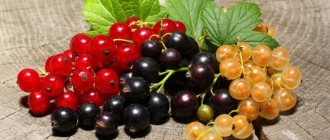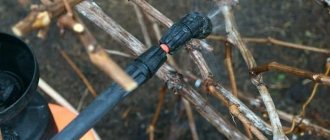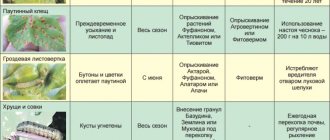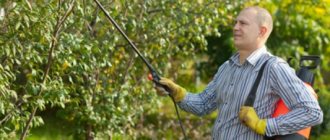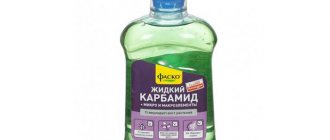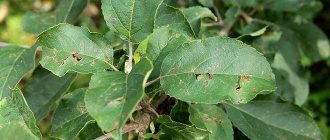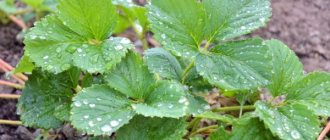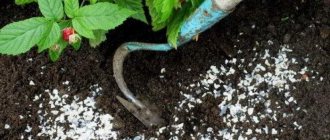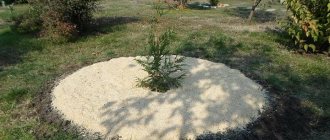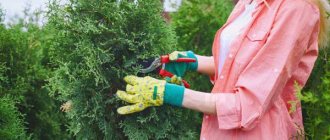Currant is a densely growing shrub that requires proper care in the autumn, otherwise its yield will decrease every year. Eventually, the bush will have to be removed and a new plant planted in its place. With proper handling of the shrub, you can increase its fruiting period up to 15 years or more. What does caring for currants in autumn consist of, we will find out further.
Trimming
Pruning is an agrotechnical technique that is carried out on all berry bushes to increase their productivity. The fact is that properly formed bushes bear 3-4 times more berries compared to neglected plants, from which unnecessary shoots take away most of the vitality. In addition, pruning allows you to achieve the following tasks:
- destroy up to 85% of all parasites, fungi and bacteria;
- form a healthy crown (after pinching, the shoots stop growing in length, and several fruiting branches begin to develop on each of them);
- increase the process of photosynthesis due to sufficient illumination of the remaining shoots;
- prepare the bush for winter (a properly formed bush will withstand severe frosts, and 10°C lower than an unkempt one);
- get a good harvest with excellent quality and product characteristics.
Of course, to achieve such results, you need to choose the right time to carry out this garden manipulation, and also follow a number of rules for its implementation.
When to prune?
It is better to carry out formative and rejuvenating pruning of bushes in the autumn, after waiting until the leaves turn yellow and fall off, so that the roots receive assimilants from old branches - organic compounds released during the process of photosynthetic fixation and reduction of carbon dioxide in plants. They will help the shrubs survive the winter by using them as reserve nutrients.
After harvesting in the summer, you can only carry out preventive or sanitary pruning of the plant. The spring movement of juices in currants begins quite early, so in March you can already observe the opening of the buds.
How to trim?
There are different varieties of shrubs, but the principle of pruning them is the same. It is imperative to remove the following branches using garden pruners:
- weak and thin, with few shoots;
- broken and painful (damaged by pests, covered with moss);
- old ones (thicker than young ones, have a dark bark color up to black and a cinnamon cut, and not white, like young shoots);
- growing inside the bush and thickening it;
- lying on the ground around the bush.
It is advisable to cut the shoots completely to ground level, without leaving stumps.
Experienced gardeners recommend shortening young blackcurrant shoots by a third, which will stimulate branching of the plant. As for white and red currants, they do not need to be shortened much, since the bulk of the berries appear on the top of the branches.
It is worth taking into account one more varietal difference: for black currants, shoots that have reached 4-5 years of age are considered old, and for red and white ones – 7-9 years old.
In order for the shrub to bear fruit well and not get sick, it needs to be provided with good lighting and ventilation. To do this, you should shorten the tops of overgrown annual shoots. They can be used as cuttings for propagating currants.
According to the rules of formation, a black currant bush consists of 6-8 main branches of different ages, and red and white ones - of 10-12. The crown needs to be updated in stages: every year, 5 promising young shoots should be left, and old shoots should be removed in the same quantity.
Useful tips for processing currants
When carrying out processing you need to know that:
- When transplanting or replanting bushes, preference is given to a new location in low areas on the western or northern slopes. In addition, if possible, heavy loamy or medium soils are recommended for black currants, and loamy soils for red currants.
- Before planting or replanting, holes are made a couple of weeks before the possible planting time - this allows the soil to settle sufficiently and be saturated with fertilizers.
- The size of the hole for a currant bush reaches 40 centimeters diametrically , while the depth does not exceed 30-40 centimeters.
- Complete disposal of aphids will occur only after complete disposal of ants . Ants are almost impossible to remove using traditional methods. Most chemicals also have little effect on them. The only way to get rid of it is to use modern highly effective baits and gels. They act after some time so that the ants have time to deliver it to the anthill and feed the larvae and the queen itself.
- When pruning, it is easy to distinguish young shoots from old ones by their dark brown color and small cracks in the bark. They are also distinguished by underdeveloped and short growths. And, of course, berry shrinkage is noticeable in the summer on old branches compared to other shoots.
- A dangerous pest is the bud mite, whose presence is indicated by overgrown buds. If there are only a few affected buds, they must be removed. If the lesions are quite significant, then the bush must be cut off and immediately burned. To repel bud mites, garlic and onions are planted among currant bushes.
Renewal and loosening of the tree trunk circle
Renewing the tree trunk circle is a garden manipulation that involves updating the old layer of mulch and clearing the area of fallen leaves. It is necessary in order to protect the site from various wintering pests.
All collected mulch and fallen leaves must be put into compost or burned if the plant is sick in any way.
After cleaning the area, you should carefully and shallowly loosen the soil using a hoe or fork at some distance from the bush so as not to touch its sensitive root system. Loosening will protect the ground from freezing with the onset of winter frosts.
After cultivating the soil, it is necessary to form a new hole to simplify watering and fertilizing. After this, the area needs to be mulched again.
Watering
In autumn, it is necessary to pay special attention to strict adherence to the irrigation regime. The bushes bore fruit abundantly throughout the growing season, so they are extremely sensitive to a lack of liquid in the soil. Thus, with scanty watering, their growth will slow down significantly, the berries will be crushed, and the plant’s yield will also be reduced.
In case of an excessively dry autumn, proper and abundant watering of the bushes will help prevent the currants from freezing during wintering.
Currant bush or 1 sq. m of sown area should be watered with 4-6 buckets of water to moisten the dry soil to a depth of 50 cm. During periods of heavy rainfall, irrigation measures are not necessary, especially if the bushes are properly mulched. If the weather is dry, then the plant should be watered until the onset of winter.
When to prune currants after harvesting - timing of the procedure
The most suitable time for pruning currants is autumn, since it is in the summer that the bushes grow quickly, forming new shoots. Berries appear on some, while others do not bear fruit, taking away some of the vitality of the plants.
Pruning currants: when and how to do it correctly - video
Autumn pruning will help direct essential nutrients to the growth and development of the plant when spring arrives.
The time for pruning is before the first frost, after the leaves have completely fallen and the movement of sap has stopped. As a rule, this happens in November.
Important!
It is not recommended to prune in the spring, since currants enter the growing season quite early, so if you decide to prune in the spring, you need to do it before the end of February.
GOOD CURRANT VARIETIES!
Black currant Lazy Currant Vigorous
Top dressing
In the fall, it is imperative to feed the soil, since during the fruiting period the bush draws all organic substances from it, including potassium and phosphorus. It is necessary to compensate not only for their deficiency and nourish the plant for the winter, but also to create a reserve for the next year.
If the berry crop was harvested by mid-summer, then you can use fertilizers with a fairly high nitrogen content, but in August or autumn they are strictly prohibited. During this period, it is allowed to use:
- Phosphorus and potassium fertilizers (superphosphate, potassium sulfate) . These are “long-lasting” components that do not affect plant growth, but increase the quantity and quality of berries during the fruiting period. The root system of the bush begins to actively absorb them at the end of May, which certainly affects the quality of the berries. So, even with a heavy load on the bushes, all the berries will be ripe and sweet. Fertilizers should be used in the form of concentrated granules.
- Compost, mullein, chicken manure. These components are necessary for the active development of the vegetative mass, that is, they stimulate the growth of shrubs. They should be applied before frost, poured directly into the tree trunk. Over the course of 3-4 months, they decompose into simpler elements and are absorbed by the soil at the right time.
Humus and compost must be added to the soil as late as possible - in October or November. The fact is that their decomposition will occur only after a couple of months, so the plant will receive the chemical elements it needs closer to spring, when it will really need them.
- Ash . It is applied both as fertilizer and as mulch, as it helps retain moisture under the soil for as long as possible. So, the earth will not crack in the spring, as can happen under garden bushes or trees.
In order not to burn the plant and not harm its root system, the gardener should take into account what absolutely cannot be done in the fall:
- Add concentrated humus . The level of nitrogen in the droppings is too high - it will take about 3 months for it to ventilate and retain only the safe components. To avoid burning the plant and destroying the vegetative mass, fertilizer should be applied at a distance of 25 cm from the plant stem. Only non-concentrated fertilizers, that is, diluted with water, can be applied directly under the bush.
- Fertilize too early . In this case, premature circulation of the sap in the plant will occur, which will lead to its death upon the onset of the first frost.
- Apply fertilizers in excess of the amount indicated on the label . An excess of nutrients will slow down the development of the bush, so even with abundant watering it will remain “in place” in the spring.
Proper application of fertilizing will allow you to prepare the currant bush for winter, as well as obtain a bountiful and high-quality harvest in the future.
Treatment against pests and diseases
In the autumn, caring for currants also involves treating the bushes from diseases and pests (bud mites, aphids), although the main work in this direction is carried out in the spring. To spray the plant, you can use chemical or biological agents, among which the following are especially popular:
- Bordeaux mixture (1% solution);
- Bitoxibacillin;
- Fitoverm;
- Fitosporin;
- Aktara;
- Alatar;
- Speed;
- Topaz;
- Fundazol.
Experienced gardeners recommend treating with systemic preparations - fungicides and insecticides. They penetrate the plant tissue and have a gradual effect throughout the entire bush, even where the solution did not reach. This is how such drugs differ from contact drugs, which act only when they come into direct contact with the source of inflammation or the pest.
Bushes should be sprayed at a temperature not lower than 20°C. Otherwise, they need to be wrapped in polyethylene. If you delay processing, the entire plant will be at risk. For example, it may be affected by a kidney mite. The females penetrate the currant buds and cause them to swell. When the infected buds open, the mites come out and penetrate new buds.
To destroy them, you will need to spray the plant with a 2% Nitrafen solution or a 0.2% Karbofos solution. The same treatment should be repeated after 10 days. After flowering, the bushes need to be sprayed with a solution of Karbofos or a 1% solution of colloidal sulfur, but you can also use home remedies like tincture of garlic, wormwood or tobacco.
Which product to choose for processing
Conventionally, all remedies can be divided into 3 groups: ready-made preparations, solutions (potassium permanganate, Bordeaux mixture, etc.) and folk remedies - decoctions and infusions of herbs, often with the addition of laundry soap.
The choice of option depends on many factors:
- Region of residence.
- Conditions of the bush.
- Prevalence of a disease or pest.
In the south of Russia and Crimea, winters are usually short, frosts below -30 0C are rare, and there is little snow. Almost all pathogens and pests tolerate such conditions well and in the spring they manifest themselves with renewed vigor. Therefore, in these regions, it is better to use strong insecticides, fungicides, antivirals, etc. for treatments in the fall.
On the contrary, in the northern latitudes the winters are harsh and folk remedies can work well here, so why bother using chemicals in vain? However, if the plant is severely affected by the same anthracnose, then it is better to try Bordeaux mixture or a strong chemical.
Bending down branches and covering them for the winter
Proper care of currant bushes in the fall will allow the plant to withstand even the most severe frosts, and will also prevent branches from breaking. Some gardeners neglect to bend down the branches and cover them, since currants are a frost-resistant crop and can withstand down to -25°C. However, the temperature may drop below the set point, so the branches will begin to die and the harvest will not be as abundant. Exposure to drafts can also lead to such consequences.
To prepare the bush for severe frosts down to -50°C and protect it from any negative effects, it should be properly prepared for winter. To do this, after the leaves fall, you should bend the branches so that they are pressed as much as possible to the ground. You can use several methods:
- Gather the branches into a bundle and tie a cobblestone to them. Afterwards, the bundle needs to be bent from the center to the side so that the branches do not break and the stem does not twist. It is recommended to do this at the end of October, when the branches are not yet very brittle and easily curl into a “ram’s horn”.
- Drive a stick or rod into the middle of the bush, tie all the stems to it, wrap it with agrofibre or other insulation and, if desired, add mineral wool. In total, you can use one rod and one rope (it is better to take a thick nylon thread). To ensure that the plant can breathe freely, you should not use polyethylene to cover it. When the sap circulation is high, the stems should be bent to one side and covered with a 5 cm layer of snow to keep the plant warm.
- Bend the branches and weigh them down with something heavy, for example, a brick. It is best to use not one, but 6-7 bricks, which are distributed among all branches.
- Bury the bent branches with soil, which is a high-quality natural insulation material. Under such cover, the above-ground part of the plant can withstand frosts down to -35°C. In the previously mentioned cases, the plant can withstand up to -50...-45°C.
- Small bushes can be covered with wooden boxes or burlap. It is necessary to ensure that such shelter is not blown away by the wind, and with the onset of snowfall, they can be completely removed, since snow is the best shelter for the plant.
It is extremely important to remove the cover in a timely manner in early spring, otherwise the above-ground part of the berry crop will damp out. In addition, with the onset of a thaw, it is extremely important to remove the snow, otherwise it will become crusty and heavy. The shoots will not be able to support its weight and will break.
Spring treatment
Work with a currant plantation begins in early spring, before the buds wake up and the sap flows:
- It all starts with thermal treatment of the bushes, which is necessary both for the prevention of the fight against various parasites and pests that survived the winter, and for further development and fruiting. The water temperature should reach 80 degrees. Watering currant bushes is done using a watering can with a sprinkler, at the rate of 3-4 liters per bush.
- After thermal treatment, we perform control pruning. The shoots could freeze or be damaged. You also need to remove all infected branches and burn their cuttings.
- Treat all wide cuts with garden varnish.
- After preventive measures, remove the plantation of currant bushes , and be sure to tie each bush with twine so that the shoots do not go along the ground.
The peculiarity of spring processing is a step-by-step mode for all types of currants:
- The first stage is thermal treatment.
- Trimming every other day.
- Feed if necessary.
- Preventative spraying before flowering with Burgundy liquid.
Features of autumn care for young berry plants
In the fall, the seedlings are planted in a permanent place in open ground, and then all the leaves are torn off and the shoots are cut using pruners at a height of no more than 40 cm from the soil surface. The cut site is treated with garden varnish.
To help the plant adapt before the arrival of winter, young bushes need to be watered abundantly for 2 weeks after transplantation, and after that the intensity of watering can be reduced.
In addition, immediately after planting and first watering the seedling, the tree trunk circle should be covered with a layer of mulch of at least 7 cm. In the next 3 years, the plant will not require feeding if the soil for the seedlings is properly prepared, fertilized with complex fertilizers, rotted manure and wood ash.
Young currants can withstand cold quite well, but in severe frosts they can freeze completely. To prevent such consequences, the base of the bush should be sprinkled with the first snow and lightly compacted. Then, as precipitation falls, a snow “coat” should be formed over the bush. The shelter must be removed with the arrival of a thaw.
Against infectious diseases
Infectious agents are well preserved under the bark and in the soil, and when the weather warms up in the spring, they become more active, begin to reproduce rapidly and destroy the plant weakened by the winter cold.
Bushes need to be treated for pests
Fungicides help protect currant plantings from diseases.
| Disease | Drugs | Rules for processing |
| All diseases of fungal etiology, incl. powdery mildew, anthracnose, rust | Bordeaux mixture | The working solution is purchased ready-made in a concentration of 1% or made independently from copper sulfate and limestone, taken in 100 g quantities per 10 liters of water. The mixture turns out turquoise in color. Number of treatments - up to 2. Interval - 1 week. |
| All diseases of fungal etiology, incl. powdery mildew, anthracnose, rust | Urea (urea) | The bush is treated with an aqueous solution (300 g/10 l). One spray is enough for preventive purposes. If symptomatic signs are present, the treatment is repeated. |
| All diseases of fungal etiology, incl. powdery mildew, anthracnose, rust | Topaz, Fundazol, Vectra | Dilute in the dosage prescribed by the instructions. Treat once as a preventive measure and up to 3 times with an interval of 7-10 days if there are signs of disease. |
| Prevention of the appearance of fungus or additional therapy in the treatment of diseases of fungal etiology | Iodine and potassium permanganate | Act as antiseptics. Iodine is diluted 10 ml per 10 liters of water. Make a weak pink solution with potassium permanganate. Used for spraying. |
| Powdery mildew | Sulfur with soap | 40 g sulfur and 1 tbsp. tar soap per 8 liters of water. Bushes with signs of a gray-brown coating on the shoots must be treated. Spray the crop after harvesting. The procedure is repeated up to 3 times with an interval of 1 week. |
Features of caring for different varieties of currants
There are different varieties of currants, although the most popular are the red and black varieties. Basically, caring for them in the autumn involves the same manipulations, but some features can be identified depending on the varietal of the plant.
Caring for red currants
Shrubs require proper care, taking into account the following rules:
- Plant the plant in early autumn so that it takes root completely in winter. To do this, prepare the hole in advance so that the soil settles and the fertilizers are absorbed. After planting, compact the soil around the bush, water and mulch. Trim the seedlings, leaving a pair of buds on the shoot.
- At the end of September or at the beginning of October, in the absence of the required amount of precipitation, moisten the areas around the bushes.
- Feed the plant with organic and mineral fertilizers: for each bush, add 10-12 kg of compost or rotted manure, as well as 100 g of superphosphate and 50 g of potassium chloride. Dig up the area so that the fertilizer penetrates deep into the soil.
- In late autumn, at the end of the fruiting period and the onset of the dormant stage, carry out sanitary pruning - remove broken, damaged, dried and deformed branches.
Red currant shoots bear fruit longer than black currants, so they do not require frequent rejuvenating pruning.
Blackcurrant care
In autumn, when caring for black currants, special attention should be paid to the following rules:
- After harvesting, feed the bush with potassium-phosphorus fertilizers to form future buds. For successful wintering, you should definitely add superphosphate and potassium chloride. It is better to apply fertilizer in liquid form when watering the plant.
- Remove affected branches and branches growing inside the bush. In addition, to prepare the bush for winter, complete sanitary pruning should be carried out. At the same time, it is advisable to carry out preventive treatment against diseases and pests by spraying the bushes with Karbofos and Bordeaux mixture.
- At the end of August, pinch out the shoots to reduce the risk of powdery mildew developing in the fall.
- Remove fallen leaves from the area, sprinkle the currant bushes with fertile soil or compost and lightly sprinkle with wood ash. In dry weather, moisten the soil by watering the bushes abundantly.
- Tie the spreading bushes and support them on a wooden frame, which is installed around the perimeter of the bushes.
Autumn is also the best time for blackcurrant rooting. So, at the end of September it is worth planting cuttings so that they have time to adapt and prepare for winter. Young growth does not require feeding or pruning, since these manipulations are carried out during the planting process.
Watch a video about preparing blackcurrants for winter:
Folk remedies
Currant processing in the fall can also be done using the same means that our grandmothers used. They were prepared without the use of harmful chemicals, which is important for the safety of the person who will later eat the fruits from the sprayed bushes.
Among the numerous folk recipes for treating currants against parasites and diseases, the following are considered the most effective:
- Garlic tincture An unpleasant, pungent odor repels insects, preventing them from reproducing and growing colonies. To prepare the solution, you need to crush 2 heads of garlic, add 1 liter of water at room temperature and leave in a jar with a lid for 7 days. Before use, dissolve 0.5 liters of the product in a bucket of water and spray the bushes.
- A decoction of wood ash will help with signs of powdery mildew. Take 400 g of ash, pour it into a bucket of water and boil it. Let it brew for a day and use it to spray currants.
- Celandine Kills aphids and moths. Place dry celandine grass (3 kg) in a bucket and fill with water. Leave for 2 days. Strain the mixture and use to irrigate the bushes from roots to tops.
- Laundry or tar soap The advantage of this product is its unpleasant odor. Insects avoid inhaling it, get scared and leave the inhabited area. Soap medicine is absolutely safe for plants. Prepare the solution as follows: grate a tar block on a fine grater and pour boiling water over it. Dissolve thoroughly and you can use. To enhance the effect, add mustard to the water (2-3 tablespoons per 10 liters).
- Onion A fragrant vegetable that rids currants of butterflies, aphids and mites. You need to prepare medicine only from the husk. Take 200 g of dry onion peel and pour boiling water (10 l). Leave for several hours or overnight. Treat the root part of the crop and shoots with the product. Pour the remaining solution into the soil, under the roots.
- Tobacco dust A foul-smelling product repels all pests. Buy tobacco dust at the store or prepare it from shag leaves: dry and grind. Then pour 400 g of the product into a bucket of warm water and leave for a day. Use the prepared infusion for a short time, otherwise the medicine will lose its beneficial properties. Tobacco dust can be used twice: in early spring and before winter.
Folk remedies act on insects and plants slowly, so you should not expect instant results. But after using ash, soap, onions, and garlic, your garden will definitely be safe.
Autumn mistakes gardeners make
Beginning gardeners often make mistakes, which subsequently reduce the quantity and quality of yield. These include:
- Applying fresh manure under the bushes . It is a useful fertilizer, but it should be spread under the bushes not in the fall, but in the winter when cold weather sets in and shoot growth stops. At this time, excess nitrogen in the manure will not have a negative effect, since it will decompose until spring into simple elements that currants can easily absorb. The application of manure in the fall should be completely abandoned if there is melt water on the site in the spring, since during floods all useful elements are completely washed away.
- Adding large volumes of organic matter to the bushes . If, after fruiting, you add an excessive amount of organic matter, the plant will build up excess green mass and forget about laying flower buds. Overfed plants will not be able to stop growth in a timely manner and prepare for frost. Experienced gardeners also note that fluffy bushes do not produce a bountiful harvest.
- Pruning a bush with improvised tools or breaking off branches . Some gardeners break off branches or trim them using pliers, a knife or scissors. As a result, broken, torn and damaged bushes do not tolerate winter well, they may become sick or be attacked by pests. So, to trim bushes, you should use special tools: pruning shears - for branches up to 1.5 cm thick;
- lopper – for branches with a thickness of 1.5 to 3 m;
- garden saw - for old branches;
- knife - for cleaning up unsuccessful cuts.
Thanks to proper care of currants in the fall, you can get a harvest of delicious berries in the future. So, the bushes need to be properly pruned, fed, protected from pests and diseases, and also prepared for winter. You should also not neglect the peculiarities of care depending on the variety of currant.
0
0
Copy link
When to prepare for winter by region
The timing and technology of preparing currants for wintering are determined by weather conditions in the region where the site is located. Since all major areas of the country have different climates, you can consider some of them individually.
In outskirts of Moscow
Since the temperature in the Moscow region in winter usually does not drop below -150C, frost-resistant currant bushes do not need any additional shelter. Their shoots can withstand temperatures down to -300C. But when growing currants of other, foreign, non-registered varieties, it is recommended to bend them down or even insulate them. These operations need to be carried out before stable frosts.
In the Urals
The harsh Ural winters force gardeners to prepare currants for winter more carefully than in the previous case. If they promise a winter with little snow, you will have to not only pin the shoots of bushes to the ground, but also consider methods of snow retention and insulation. It is recommended to mulch the currant tree trunk to protect the root system from freezing. All preparation must be carried out after leaf fall before the onset of stable frosts.
In Siberia
If the winter is snowy, then it is enough to mulch the soil in the circle around the trunk and bend the branches to the ground. If the promise of little snow is expected, and the area is blown by winds, you need to carefully prepare the bush for wintering: mulch, bend, and additionally insulate it.
In the Leningrad region
The mild and snowy winters characteristic of this region make it possible not to bend down or cover currant bushes. Due to the high air humidity in the Leningrad region, special attention is paid to the quality of pruning and treatment against pests and diseases. These types of work are carried out in late August - mid-September.
